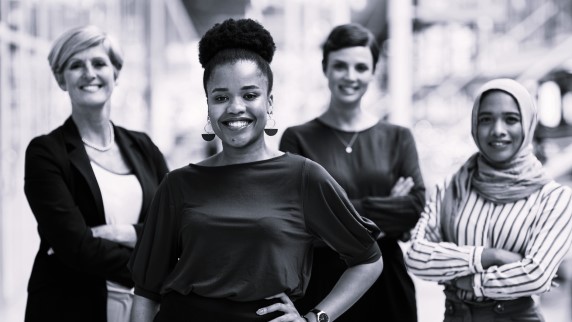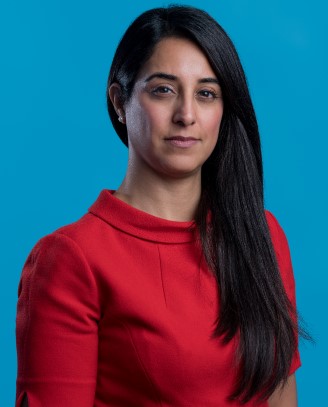
Keeping up the momentum in the quest for gender equality
A diverse workforce can help make an organisation more effective and competitive, but there are still challenges facing us in the quest for gender equality.

I was excited this week to be invited to take part in a discussion to mark International Women’s Day, with regulatory partners from the FCA, PRA and Financial Ombudsman Service.
As I reflect on the importance of breaking down barriers for women in financial services two factors resonate most. In the interests of pure fairness, the quest for gender equality makes sense as it is quite simply the right thing to do. However, it is also how a diverse organisation can draw on a wide range of perspectives from across the business, enabling it to be more competitive and better able to cater for a wide range of customer needs.
Allyship and collaboration play a really important role in establishing an inclusive culture and diverse workforce within an organisation. I’ve been very lucky to have mentors and allies from the time I was studying and through my career. That’s not to say I haven’t experienced challenging situations but as I reflect on my own career, I owe a great deal to those around me, both men and women trusted me, developed me and most importantly believed in me.
Allyship, first and foremost, is about being there for one another. It's about recognising that we all have a part to play in creating a more inclusive and equitable world. It means standing up for one another, amplifying each other's voices, and actively working to dismantle the barriers that hold women back. Whether you're a man, a woman, or however you identify, allyship calls on us to listen, learn, and show up for each other in meaningful ways.
But allyship isn't just about individual actions - it's also about coming together as a community to create change. That's where collaboration comes in. Collaboration is about recognising that we're stronger together than we are apart. It's about joining forces, sharing resources, and pooling our talents to tackle the challenges that lie ahead. When we collaborate, we can achieve so much more than we ever could on our own.
So, what does this look like in practice? It means men helping to advocate for gender equality in their workplaces and communities. It means women supporting each other's ambitions and celebrating each other's successes. It means working together across lines of gender, race, sexuality, and ability to create a world where everyone has the opportunity to thrive.
It also means looking at internal frameworks and making sure organisations give themselves the best chance to attract diverse talent. For too long, a reluctance to hire people without many years of industry experience has made it much harder to change the underlying demographic of staff, which at senior levels in particular has a history of lacking diversity, despite the benefits of diverse workforces being there for all to see.
The FCA and PRA are currently consulting on a new diversity and inclusion framework, recognising that there are a whole raft of benefits from having a more diverse workforce. As the CEO of the PRA, Sam Woods said recently when launching the consultation: “Diversity and inclusion play an important role in guarding against groupthink within firms. Stronger diversity and inclusiveness should also make firms more competitive by enabling them to attract a wider pool of talent.”
Indeed, research in the US by Vanguard found that active equity funds with gender-balanced investment teams tend to outperform those that have all-male or all-female teams. Funds managed by single-gender teams underperformed their benchmarks by 12 basis points (bps)[1] on average, while funds managed by mixed-gender teams outperformed their benchmarks by an average of 10 bps. The benefit was even greater (23 bps) when teams were made up of 50% women and 50% men.
FSCS has been leading the way in terms of diversifying its workforce. In 2018, we joined HM Treasury’s Women in Finance Charter which aims promote gender diversity in financial services. Since becoming a signatory, FSCS has made much progress towards the aims of the Charter, most notably reducing the gender pay gap from 18% in favour of men to 1.49% in favour of women at the end of the 2022/23 financial year (compared to a national average of 15.4% in favour of males). In addition, 67% of our Board members are female and three out of the five current members of our Executive Team are female.
But of course, there’s still more to do. On Friday, the House of Commons Treasury Select Committee published its report on Sexism in the City (PDF 0.6MB) which shines a light on the culture that still exists in many major financial institutions in the UK. And gaps in understanding between male and female customers remain. Feedback provided by our customers in our customer satisfaction surveys shows that men tend to be more likely than women to understand the process of claiming compensation with FSCS. Consumer research we conducted in November 2022 also found that men were twice as likely than women to be aware of FSCS and have a good understanding of its role (38% vs 19%).
FCA research has found that women are more likely than men to have characteristics of financial vulnerability (52% vs 42%), low financial capability (17% vs 10%) and low financial resilience, and another study suggests that less than 50% of women consider themselves financially independent.
Aiming for financial independence can be a great goal for your future. That means that you could live the life you want supported by your savings and investments. Being financially independent can give you the power to take control of your time and the freedom to choose how you spend it.
Education and awareness are key to sustaining the vision of International Women's Day throughout the year. The hard numbers haven't moved enough for us to become complacent and we need to actively be promoting gender equality in schools, workplaces and communities through multiple platforms to reach greater numbers.
So, let's make a commitment to keep up the momentum in this space - to be better allies, to collaborate more, and to keep pushing for progress for everyone to have the chance to fulfil their potential and have their needs met.